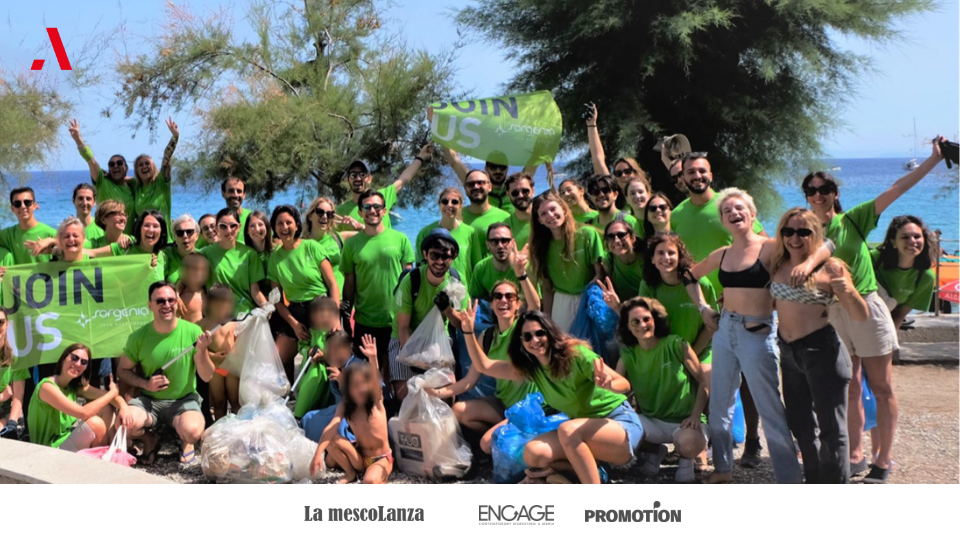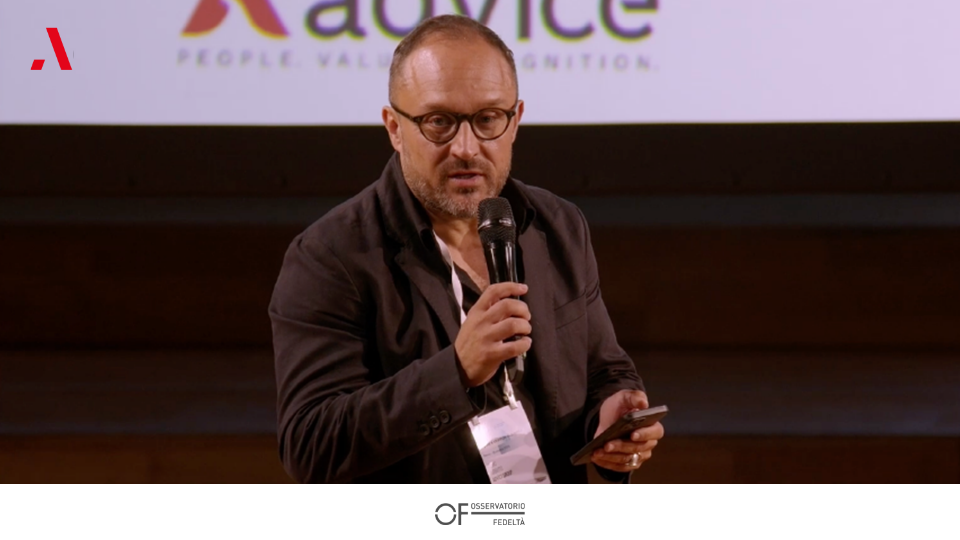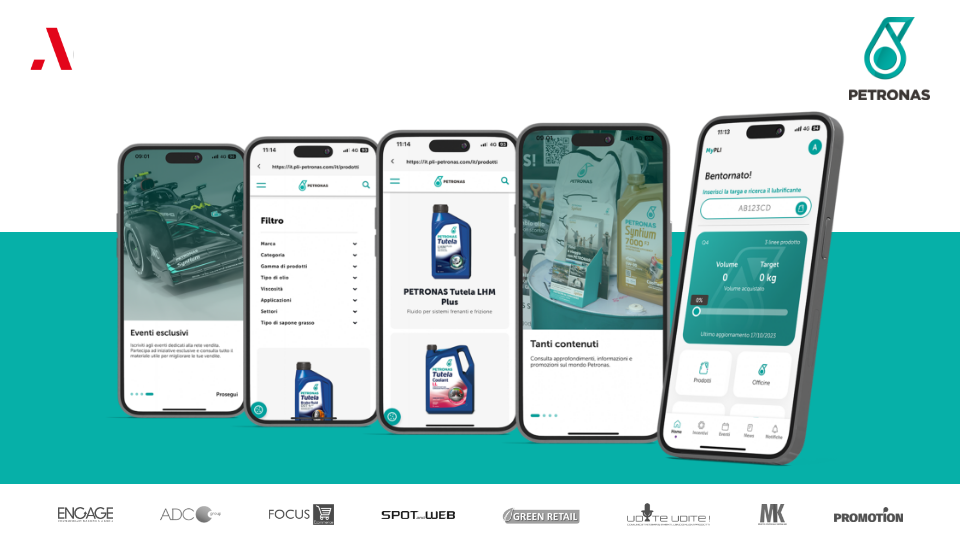Gamification and loyalty to shorten the distances between brands and people in retail
The retail landscape is undergoing a profound transformation and retailers must be ready to adapt to changing market conditions.

There is no doubt that the retail sector has been at the centre of a huge transformation lately. And the causes? Geopolitical instability, economic uncertainty, and the impact of the pandemic. These factors have profoundly influenced the relationship between brands and consumers, who today are more demanding, informed, and aware of their purchases and behaviour. For companies, this means having to rethink their strategy to adapt to the new competitive landscape, with the aim of remaining relevant in the minds of consumers.
WHAT ARE THE TRENDS IN RETAIL?
To better understand the context, let's explore three macro-trends that are driving the relational dynamics between brands and consumers.
Authentic relationships: people don't just want to make purchases, they want to have engaging and genuine experiences with brands, identifying with their values. Consumers expect companies to make them feel like the focus of their attention, in ways that go beyond mere transactions.
Omnichannel experiences: the modern consumer is hybrid. They are not limited to a single purchasing channel, but want to have seamless experiences with smooth transitions between the physical and digital touchpoints available to them.
In-store engagement: although digital channels are highly appreciated by consumers, the in-store experience remains important because it represents the point of direct contact with the brand.
The retail landscape is undergoing a profound transformation and retailers must be ready to adapt to changing market conditions. How can they seize every opportunity offered by the change? We'll explain through a case study.
ADAPTING TO CHANGE: THE CASE OF FLYING TIGER COPENHAGEN
Flying Tiger Copenhagen is a clear example of how a company has been able to adapt to the context to remain competitive and maintain its relationship with prospects and customers over time.
Let's take a step back. In 2020, like many companies, Flying Tiger Copenhagen had to close its stores due to pandemic-related restrictions - a situation that put a strain on its relationship with its customers. At the time, in fact, its approach to loyalty followed an app-based transactional model that allowed users to unlock actions and benefits only after buying products in-store: a static customer journey that caused a surge in the in-app dormancy rate!
Hence the need to create a dynamic pathway that leaves the user free to navigate among the various opportunities offered by the brand, a need that led to the development of a completely new app.
A NEW APP THAT SUPPORTS INCLUSIVE AND DEMOCRATIC LOYALTYA
The new app, launched at the end of 2022, overcomes the limit of static customer journeys and offers a continuous interactive experience through a pathway built according to gamification logic. Consumers get engaged in activities that go beyond their purchases: they are free to explore, participate in missions, and receive value, regardless of their spending power!
Flying Tiger has made a clear choice with this strategy: loyalty should not be a programme for the few but a democratic opportunity, intended for the entire public, even those who rarely visit the points of sale. The entire strategy is in fact built on the principles of behavioural loyalty: a transactional aspect, which rewards purchases and visits to points of sale, as well as above all a behavioural aspect, which sees a profound value to be cultivated in the relationship with the user, both coexist within the app.
ADVANCED GAMIFICATION TO SUPPORT THE RELATIONSHIP
Gamification guides the relationship: after downloading the app, the user immerses themselves in the fantastical world of Flying Tiger and, as in all fantasy worlds, they can be whoever they want by choosing an avatar from those available. And just like every self-respecting superhero, every avatar has their own skins that make them stronger!
Within the app, the user can take part in different kinds of missions: transactional missions, related to buying products, and behavioural missions, responding to weekly quizzes and surveys to support data enrichment. Each action gives back dual value in the form of experience points and branded coins, which allow them to move up levels in the game world and unlock coupons to spend in store, respectively.
EXPERIENCE BECOMES PHYGITAL
The app represents a new touchpoint designed to connect the physical world to the digital one through a fluid experience. Customers who go to the store can interact with the app, convert the points accumulated through the behavioural missions into discounts, and check in at the point of sale: a simple action that gives them back value, making the shopping experience richer and more engaging. Flying Tiger Copenhagen thus stimulates the drive to store in a way that supports transactionality and, at the same time, cultivates an emotional connection with the consumer. The app aims to transform the experience of visiting the store into an emotional journey that goes beyond the mere transaction, allowing users to feel like an integral part of the Flying Tiger world.
A POCKET TOOL FOR BUSINESSES
For the company, the app is a tool that puts the user at the centre in a way that supports R&D activities: thanks to an innovative feature, customers can vote for a different brand product every day with a simple "like" or "dislike". If the product is not to their liking, the survey continues to investigate the reasons. This information is gold for Flying Tiger: while on the one hand, it enables the company to optimise assortments, increasing production of the most popular products or abandoning those that generate significant unsold items, on the other hand, it enables them to plan communication and marketing campaigns aimed at specific user clusters.
THE RECEIPT: A BRIDGE BETWEEN TRANSACTIONS AND BEHAVIOURS
Customers can also upload their purchase receipts in the app in exchange for value: experience points and coupons to spend in Flying Tiger stores. But what does the receipt represent for the brand? A real treasure trove of data on its customer base: from consumption habits, to interest in environmental and social issues, to customer preferences and interests, as well as conventional socio-demographic information. Receipts are fundamental for basket analysis, which underwent its strategic launch in January 2024 and will be used to get to know customers better, putting together business offers aimed at specific targets. The user clusters identified will also be traced back to analysis of the personas previously identified by Flying Tiger, which help determine the product assortment and communication strategy.
SOME RESULTS
The Flying Tiger loyalty strategy was launched in December 2022 and in less than two years, it has achieved major results. The project involves both prospects and customers: anyone can subscribe to the app, participate in activities, and receive value... even without making purchases! To date, the ratio between prospects and customers is 70:30, which means that the programme also has a strong appeal in terms of lead generation and for people who are "Flying Tiger Lovers" but are unable to buy at the point of sale. In addition, loyal-buyer users have a 50% higher average receipt than customers who are not signed up to the programme. The foot traffic at the point of sale also benefits from the loyalty strategy: loyalty customers visit the store 3 times more often than non-loyal ones!
AN INTERNATIONALLY RECOGNISED STRATEGY
The strategy behind the Flying Tiger Copenhagen app has been recognised as the best gamification project in the world: a title awarded by the International Loyalty Awards in Dubai, the prestigious competition that celebrates the best loyalty projects on a global scale every year. This award underlines the effectiveness and innovation of the strategy: the ability to engage and motivate users through playful and interactive elements has made the project a benchmark not only at the local level, but also at the global level, confirming its position of excellence in the panorama of initiatives focused on gamification.
WRAP-UP
We have seen how an innovative loyalty strategy has enabled Flying Tiger to become a true Loyalty Hero that has made its ability to adapt its superpower.
Rethinking the relationship with its customers, giving them back value beyond their spending power and entering into dialogue with the entire customer base, is now essential to staying competitive and remaining relevant in the minds of consumers.











